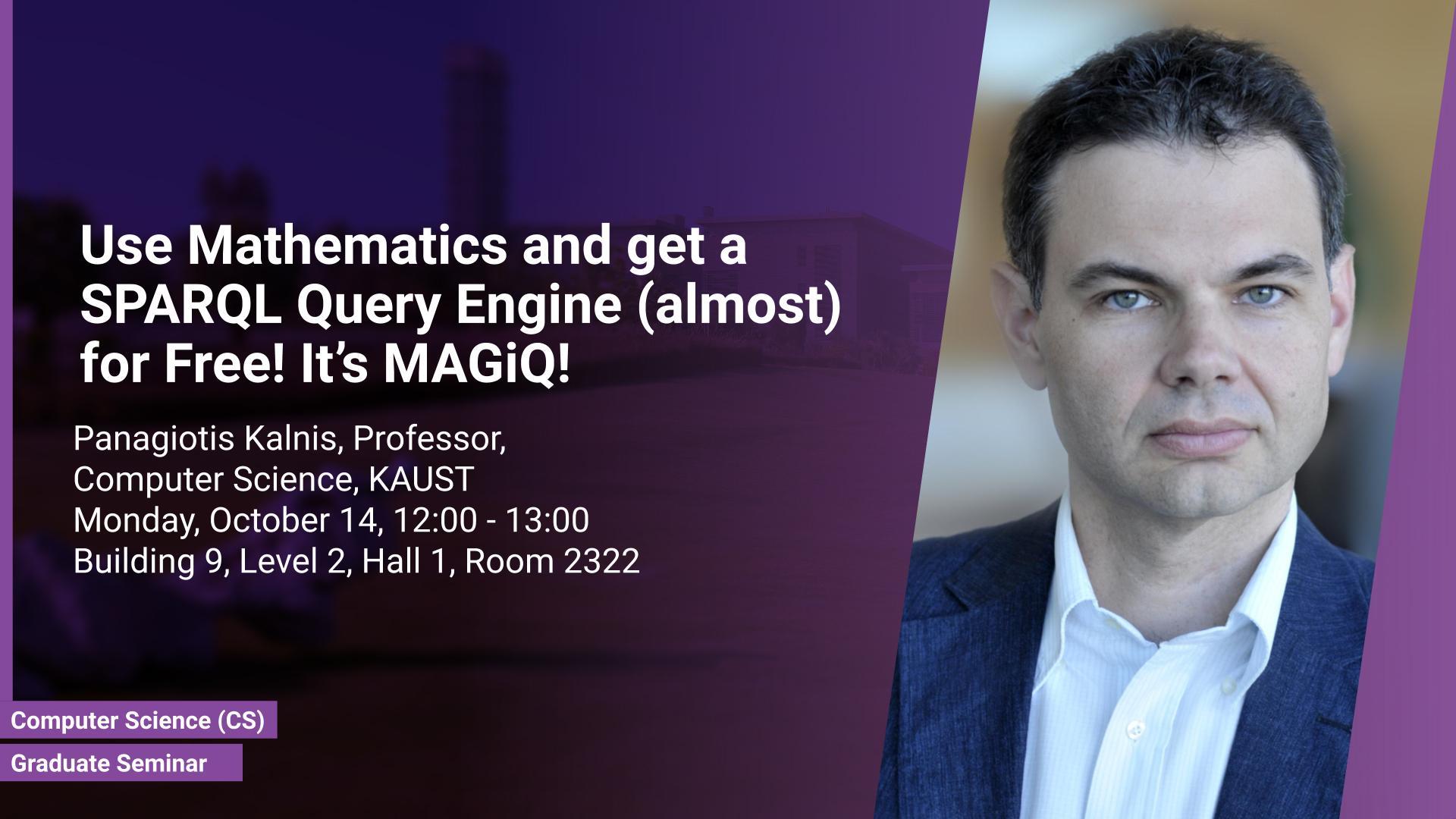Abstract
Existing RDF engines are designed for specific hardware architectures; porting to a different architecture (e.g., GPUs) entails enormous implementation effort. We explore sparse matrix algebra as an alternative for designing a portable, scalable and efficient RDF engine. We propose MAGiQ; a matrix algebra approach for evaluating complex SPARQL queries over large RDF datasets. MAGiQ represents RDF graphs as sparse matrices and translates SPARQL queries to matrix algebra programs. It takes advantage of the existing rich software infrastructure for processing sparse matrices, optimized for many architectures (e.g., CPUs, GPUs, parallel and distributed). We demonstrate how MAGiQ can utilize MATLAB and various matrix algebra libraries to execute SPARQL queries on CPUs and GPUs. We also show that MAGiQ on a GPU is orders of magnitude faster than state-of-the-art RDF systems on a billion-edge graph.
Brief Biography
Panos Kalnis is a Professor in the King Abdullah Univ. of Science and Technology and served as Chair of the Computer Science program from 2014 to 2018. In 2009 he was a visiting assistant professor in the CS Dept., Stanford University. Before that, he was an assistant professor in the CS Dept., National University of Singapore (NUS). In the past, he was involved in the designing and testing of VLSI chips and worked in several companies on database designing, e-commerce projects, and web applications. He has served as an associate editor for the IEEE Transactions on Knowledge and Data Engineering (TKDE) from 2013 to 2015, and on the editorial board of the VLDB Journal from 2013 to 2017. He received his Diploma from the Computer Engineering and Informatics Dept., Univ. of Patras, Greece in 1998 and his Ph.D. from the Computer Science Dept., Hong Kong Univ. of Science and Technology (HKUST) in 2002. His research interests include Big Data, Parallel and Distributed Systems, Large Graphs and Systems for Machine Learning.
